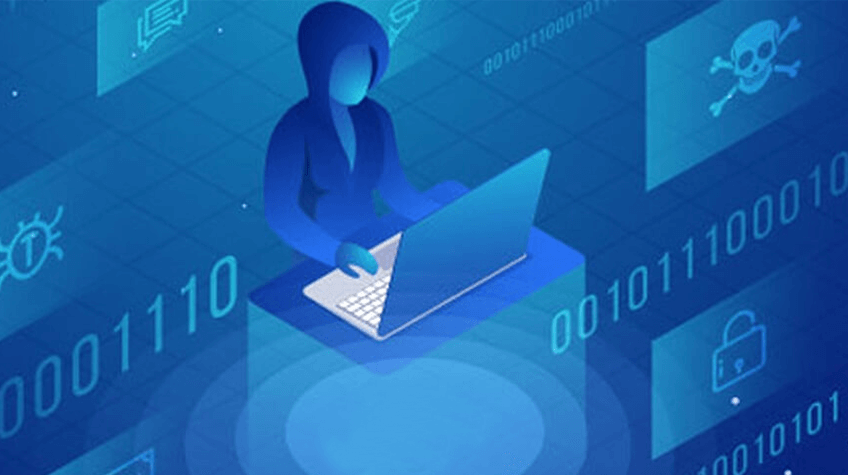
Security issues have become prevalent in all aspects of life, particularly as the frequency of data breaches continues to climb. You can’t be confident that your data is secure enough, even if you have a dedicated server. Breaching dangers are always present, but with the correct security safeguards in place, you can improve and preserve the security of your dedicated server. The following are some of the most prevalent security breaches that dedicated servers face:
Password breaches are the most common security problems that dedicated servers face. Despite the fact that most businesses use servers because of their tightly managed security, hackers continue to devise sophisticated methods to damage or delete data in your hosting account.
Malware concerns are also a concern, given how simple it is to install apps on servers. Malware can replicate even the most sensitive and confidential databases, putting your company in danger.
Denial of service (DoS) attacks can potentially cause your server to crash or become unavailable due to traffic overload. Malicious computers may cooperate together to squander hardware resources through traffic flooding, resulting in a negative experience for your legitimate consumers.
Sometimes it feels that there is no way to secure your server; there is nothing that you can do to make your dedicated server more secure. BUT, that’s not how it is. There are ways to secure your server from hackers, and we’re going to discuss the same in this post.
Take a look at some of the easiest but most efficient techniques to secure your server.
Here we go…
Table of Contents
25+ TECHNIQUES TO SECURE YOUR SERVER
1. Have a strict password policy in place
To begin, make certain that you change the passwords as soon as you get a new server. Using the default password raises your security risks. After changing the passwords, you should take precautions to protect them, such as creating passwords with a random combination of digits, symbols, and case-sensitive letters. Avoid using words that are directly linked to your identity, and change your passwords on a frequent basis.
Personal information such as your birthdate, birthplace, pet names, and other details that might be used to link you, the user, to the password should be avoided. These are incredibly simple to guess, particularly by people who know you well. Then, simple lexicon words make passwords easy to crack, especially when using dictionary (brute force) attempts. Avoid repeated character sequences in the same password if you’re concerned about the same threat.
Finally, never reuse a password across numerous accounts. You put yourself at tremendous risk by recycling passwords. If a hacker gains access to one account, all other accounts with the same password are potentially vulnerable. Try to use a different password for each account and use a password manager like iPassword to record them.
2. Perform routine scans and tests
Although a dedicated server is safer, you should be vigilant in terms of security. You’re more likely to avoid breaches if your hosting provider performs regular vulnerability scans and checks. Also, before uploading to your website, you should check for unexpected behaviors and test software on remote security devices.
Security Related Blog – 1: DevSecOps Automation
Security Related Blog – 2: DevSecOps 2.0
3. Remove unneeded software
Remove any superfluous software from your server to reduce its vulnerability. This means that you should only install and maintain the software that is absolutely necessary to run the server. If you believe a piece of software is just an add-on or takes up too much space on your computer, uninstall it. It’s better to be safe than sorry, even if leaving it is absolutely harmless.
4. Keep track of your databases
Even if you have a dedicated server, it is one of the most crucial things you should be doing. SQL injection should be avoided at all costs, especially when obtaining sensitive client data. You can also improve security by limiting database users’ rights and deleting data that is no longer required or desired. If at all possible, avoid interactions between your database and your clients.
5. Have an expiration policy for passwords
Another common practice to secure servers from hackers is to have a password expiration date in place. A password can last anywhere from a few weeks to a few months, depending on the level of protection necessary. Doing so will help you avoid cyber-attacks and keep your data and server safe.
6. Use private and virtual private networks (VPNs)
Using private and virtual private networks (VPNs), as well as software like OpenVPN, is another option to assure secure communication. Unlike open networks, which are available to the public and thus vulnerable to attacks from cybercriminals, private and virtual private networks limit access to just a limited number of users. Private networks establish independent communication channels between servers within the same range using a private IP address. This allows several servers under the same account to share data and information without exposing themselves to the public internet.
Related Article: The Role of VPN in Business Security
7. Isolating execution environments
Individual components are run in their own dedicated space in isolated execution environments. This entails isolating your application components onto separate servers or setting services to run in containers. The degree of isolation depends entirely on the needs of your application and the capabilities of your infrastructure.
8. Limit your uploads
In order to collect data, your server will need to accept data from end-users. Even while uploads are required, you should keep the amount of data entering the system to a minimum. To do so, make sure that forms are appropriately formatted so that only the essential data is entered into the system.
9. Use SSH keys
You can validate an SSH server with a pair of SSH keys instead of a password, which is a better option than standard logins. Most contemporary computers cannot decipher the keys because they include many more bits than a password. A public key and a private key make up the key pair. One copy of the public key is kept on the server, while the others are distributed to users. Anyone with the public key can encrypt data, but only the associated private key user may decrypt it. The private key must be kept private and not shared with anyone. Before granting privileged access, the server requests proof that the user has the private key while establishing a connection.
10. Update software on a regular basis
On dedicated servers, the last thing you want is out-of-date software. This is due to the fact that it lacks the necessary security patches, protection, and upgrades to keep your data safe. To stay protected and up to date, make sure you install new versions of your dedicated server software whenever they become available and run reliable security checks.
Updating software ensures that the server is as secure as possible. One technique to ensure that no updates are overlooked is to use automatic updates. Allowing the system to make such modifications on its own, though, could be dangerous. It’s a good idea to test an update in a test environment before applying it to your production system. Ensure that the server control panel is updated regularly. If you utilize a content management system, you should also keep it up to date and any plugins it may have. Security patches are included with every new version to address known security concerns.
11. Set up a secure connection
It is critical to establish a secure communication channel while connecting to a remote server. The best technique to establish a secure connection is to use the SSH (Secure Shell) Protocol. SSH access, unlike the previously utilized Telnet, encrypts all data sent during the transaction. To achieve remote access using the SSH protocol, you must install the SSH Daemon and have an SSH Client with which you may send commands and administer servers.
SSH utilizes port 22 by default. This is something that everyone, including hackers, is aware of. The majority of individuals overlook this relatively inconsequential fact. On the other hand, changing the port number is a simple technique to lessen the possibility of a hacker hitting your server. As a result, using port numbers between 1024 and 49151 for SSH is the best practice.
12. SSH protocol
It is critical to use Secure File Transfer Protocol to transfer files to/from the server without the risk of hackers damaging or stealing data. It encrypts data files as well as your integrated security. File Transfer Protocol Secure (FTPS) has two channels: a command channel and a data channel, both of which can be encrypted by the user. It’s important to remember that it only secures files while they’re being sent. The data is no longer encrypted once it reaches the server. As a result, encrypting files before delivering them offers an extra degree of protection.
13. Use passphrases passwords for servers rather than regular passwords
A pass is a similar concept to a password. A password, on the other hand, is anything that is used to authenticate or log into a system. A password is a secret that is used to secure an encryption key or server. Typically, the pass is used to generate an actual encryption key, which is then used to encrypt the protected resource.
A good pass should have at least 15 characters, ideally 20, and should be difficult to guess. Upper case characters, lower case letters, numerals, and at least one punctuation character are all recommended. No part of it should be derived from the users’ or their family’s personal information.
The best part is that passphrases are far easier to remember than a random password. Also, it’s difficult to crack them.
Here is an example: A password passphrase can be: SheLovesDancingInTheMorningAt0430!
14. Use Secure Sockets Layer (SSL) Certificates
Secure your web administrative sections and forms with Secure Socket Layer (SSL), which encrypts data sent over the internet between two systems. SSL can be used for both client-server and server-server communication. The application scrambles data to prevent sensitive data (such as names, IDs, credit card numbers, and other personal information) from being stolen while being transmitted. HTTPS in the URL indicates that a website has an SSL certificate, indicating that it is secure.
The certificate not only encrypts data but also serves as a means of user authentication. As a result, handling certificates for your servers aids in the establishment of user authority. Administrators can set up servers to communicate with the centralized authority and any additional certificates it signs. Important information, such as credit card data or identification details, is kept secret and cannot be stolen while in transit with SSL. If you don’t have an SSL certificate, hackers can simply access your server; therefore, make sure you have one.
You can buy SSL certificates from direct authorities or resellers at lowest price. Either you go with single domain or wildcard SSL certificate, you will get discounted price with your purchase. SSL certificate enhances the confidence level of customer while dealing with the website as they know that they are dealing with the correct website and their data will remain secure.
Related: What is a 502 Bad Gateway Error, and How to Solve It?
15. Protect and secure your server in a professional manner
Know that anything connected to the internet is subject to cyber-attacks. As a result, it’s necessary to take some extra precautions to ensure optimal protection. Following these reliable methods for securing your server will give you peace of mind, knowing that your system and all of your valuable data are safe from hackers.
Related Article: Use Cases of Facial Recognition Solution in Digital Era
16. Restricted login attempts
Restricting login attempts with intrusion prevention software is one technique to safeguard your system against cyber-attacks. These automated attacks employ a testing method to obtain access to the system, attempting every possible combination of characters and digits. Have intrusion prevention software. Having intrusion prevention software allows you to have improved server security. All the login attempts are monitored by intrusion prevention software, which detects any suspicious login attempts. If the number of tries reaches a predetermined threshold, intrusion prevention software will block the IP address for a set length of time, or even eternally.
17. Use administrator accounts only in extreme instances
Malware frequently has the same permissions as the user who is actively using the computer. Access to the most critical parts of a computer or network system is usually limited to non-administrator accounts. As a result, it’s advised to avoid utilizing administrator privileges to access the web or check email. It’s ideal to only log in as an administrator when you need to change configuration settings or install applications. Don’t miss to validate software before you install it.
18. File auditing systems
You might use file auditing technology to keep your server’s health in tip-top shape. A file auditing system is a software that uses a mechanism to detect authorized changes by comparing the current system to a database of files and file characteristics.
19. Set up firewalls
A firewall is a piece of software or an appliance that works as a barrier between a computer system or network and outside intruders, preventing illegal access while permitting authorized communications. It’s a gadget with powerful centralized management and reporting capabilities that prevents unauthorized users from accessing private networks connected to the internet.
Installing a firewall will help you protect your private network from illegal access. When used in unison, firewalls dramatically lower the likelihood of hackers and phishers penetrating your computer or network.
A typical server performs a variety of services by default, including public, private, and internal services. Web servers that need to give access to a website typically run public services. Over the internet, anyone can use these services, typically anonymously. When working with a database control panel, for example, private services are employed. In that instance, a group of people must have access to the same location. Inside the server, they have approved accounts with unique privileges. Internal services should only be accessed from within the server and only accept connections from within the server. They should never be exposed to the internet or the rest of the world.
20. Intrusion detection system
Using an intrusion detection system can help you keep your server’s health in perfect shape. An intrusion detection system is a system that monitors a network or system for illegal activity. Having an intrusion detection system in place can help you keep cyber-attacks at bay.
21. Service auditing
This technique supports in the finding and listing of services operating on servers in your infrastructure by examining systems, accessible attack surfaces, and locking down components. When a computer boots up, the default operating system is frequently configured to execute specific services.
22. Server virtualization
Server virtualization is yet another way to secure servers from hackers. It is the process of concealing server resources in order to maximize resources by splitting a real server into smaller virtual servers. The physical server is divided into many virtual environments by the administrator. Hackers frequently steal data from servers these days. Small virtual servers can run their own operating systems and reboot independently of one another due to server virtualization. Virtualized servers are used to discover and isolate programs that are unstable or have been hacked.
Virtualization is most commonly found in Web servers that provide low-cost Web hosting. Server utilization controls the intricacies of server resources while improving usage and maintaining capacity. While securing the server, virtual computers, and the entire network, a virtualized server makes it easier to detect malicious attacks or damaging materials. Server virtualization generates an image of a server, making it simple to discover if it is malfunctioning.
23. Turn off unnecessary services
People taking advantage of security gaps or faults with these programs are responsible for a large number of computer break-ins. The more services operating on your computer, the more options there are for others to use them, hack into your computer, or take control of it. Check to see if the open ports and the services that use them are still required. Services that aren’t required for the functions you use are frequently auto-enabled when software is installed.
Find out which services are outdated after you know which open ports are required. These are frequently vulnerable to obvious vulnerabilities. Installing only those that are needed to maintain your services functioning is all you need.
24. Avoid sharing your server information
Hackers or cyber-criminals can easily gain access to your system servers by simply knowing their IP addresses. Make sure that this type of information about your server is kept private and only accessible to those who need to know. The less information available about the server, the better. Also, it is advised to keep the version numbers of any software you put on the server hidden. They frequently expose the precise release date by default, which can benefit hackers in their search for vulnerabilities.
25. Backup server
This is yet another critical method to secure servers from hackers. It is critical to keep a system backup in case something goes wrong. A backup server is a sort of server that allows users to back up data, files, applications, and databases. It can be locally based or a remote backup server, and it has both hardware and software features for managing and recovering backups. It is one of the safest ways to ensure that you’re serious about server security. So, if any problem or attack occurs, you may rest easy knowing that your data is still safe. You can even take steps to safeguard yourself using cyber security strategies and backup software before something serious occurs.
26. Hire an expert
Last but not least, hire an expert to secure the server from hackers. Network and Internet security is a specialty of many IT workers, called server engineers. If your technical knowledge is inadequate and your budget allows, hire a security expert to safeguard your server from hackers for you. Salaries for these workers range from a few thousand dollars to hundreds of thousands of dollars, depending on their level of expertise. Though it may appear to be expensive, it will pay off in the long run, especially if you have sensitive data on your servers.
Wrapping it up…
So there you have it: the 25+ techniques to secure servers from hackers. To feel secure about your cyber security, use these tactics. Aside from these factors, having a well-trained crew aids in server security.
Most of the security procedures listed above should be executed during the server’s initial setup, while others should be performed regularly. If your server monitoring isn’t automated, make sure you plan and execute security inspections on a regular basis. Also, keep up with the latest cyber security best practices to have a secure server.






